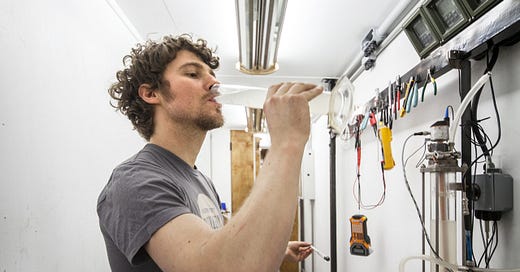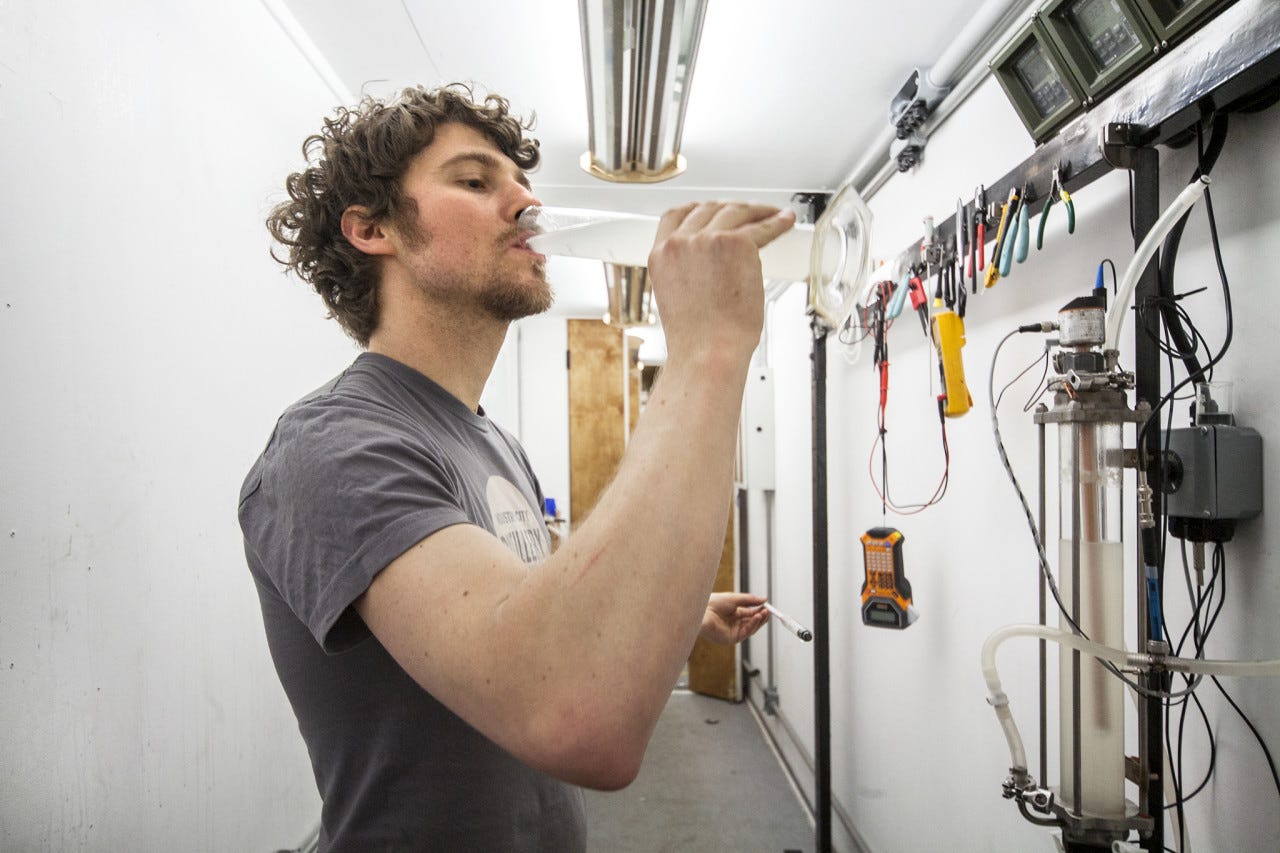The Great Brooklyn Vodka Experiment
In a Sunset Park warehouse that looks more like a science fair than a distillery, a fisherman, a yoga teacher, two art school grads and a machinist set out to invent the perfect vodka—just because they can.
Vodka, straight up. That’s not an order you hear too often. In this country, at least, vodka is more often a cocktail ingredient than its own autonomous liquid. We appreciate its high proof, but mask the taste with sugary mixers like Red Bull or cranberry juice.
My freshman year in college, in an attempt to remove the flavor of rubbing alcohol, some friends ran a $5 liter of bottom shelf vodka through a Brita filter. The vodka rendered the Brita useless and stubbornly retained its eye-watering odor. The best vodkas on the market, we came to believe, must taste like nothing at all.
The five young men behind Industry City Distillery want to change our minds about vodka. The first project of the City Foundry, a small research and design group that its founders describe as “a research and design collective dedicated to rethinking small-scale manufacturing through science and art,” the distillery is an attempt to create vodka one would gladly drink straight. At the sam…
Keep reading with a 7-day free trial
Subscribe to Narratively to keep reading this post and get 7 days of free access to the full post archives.





